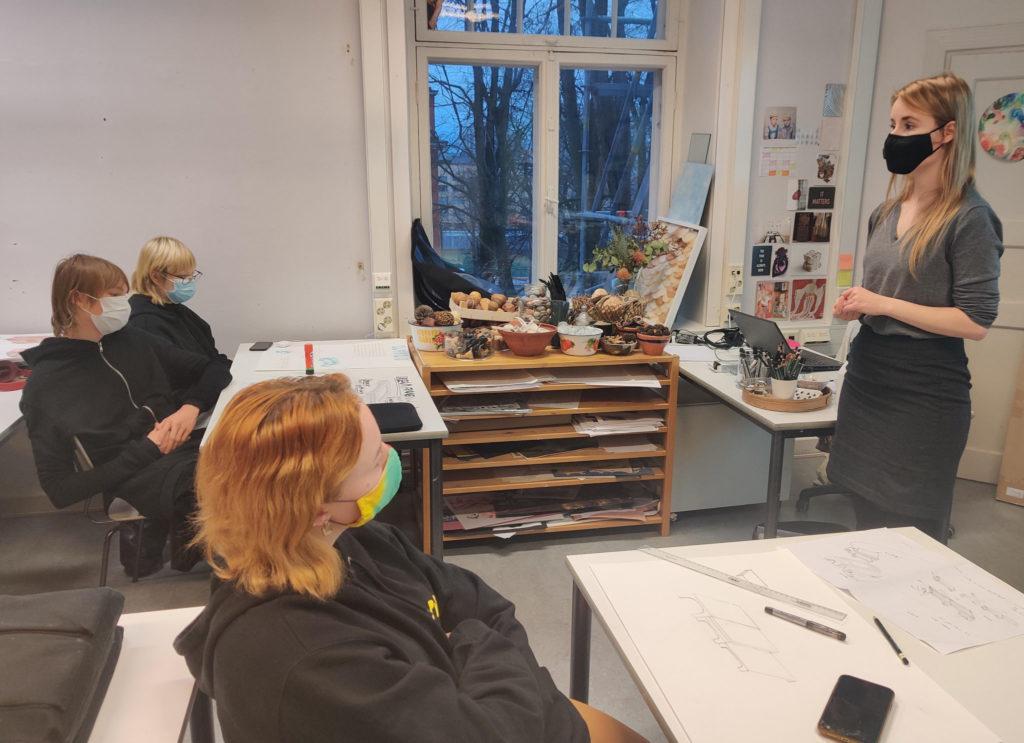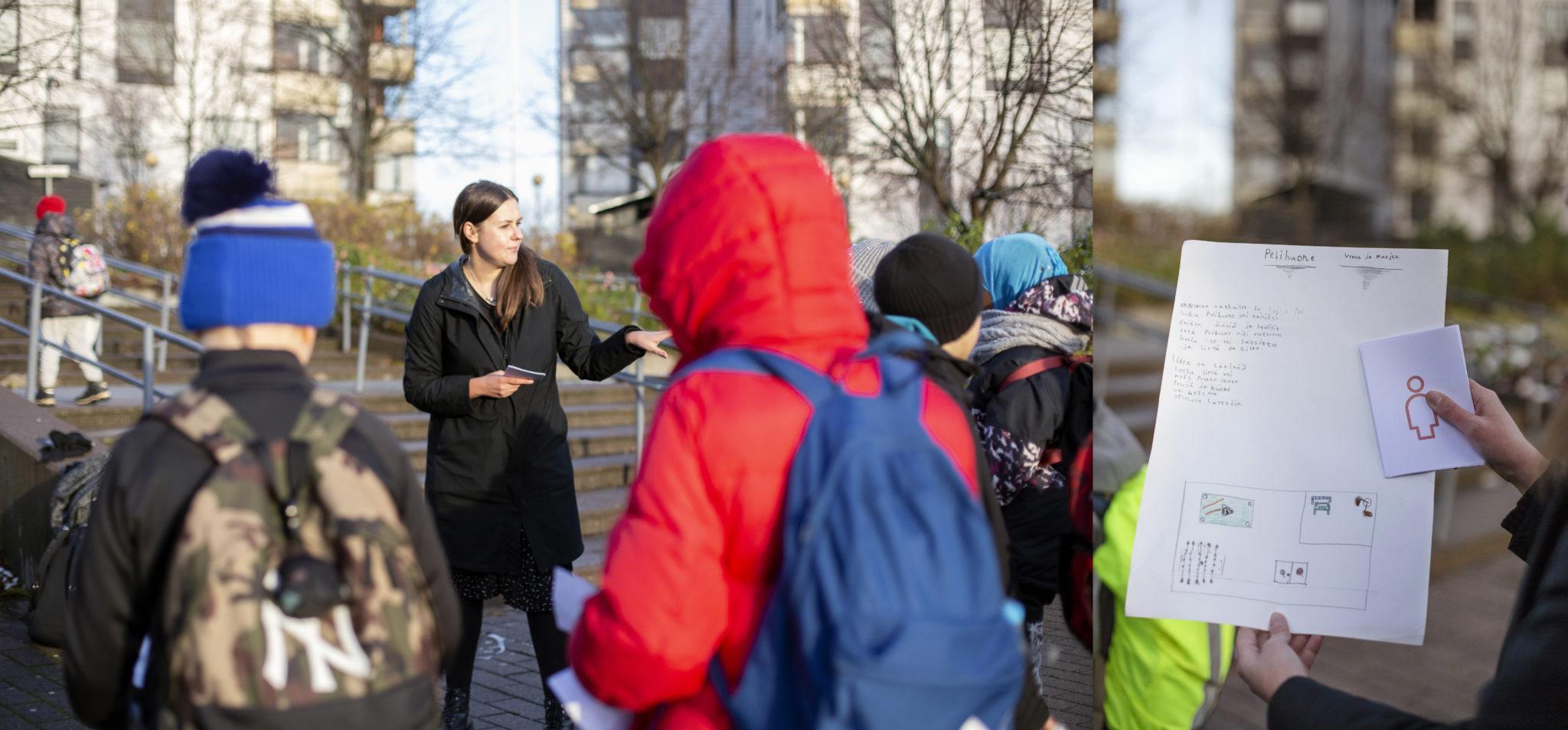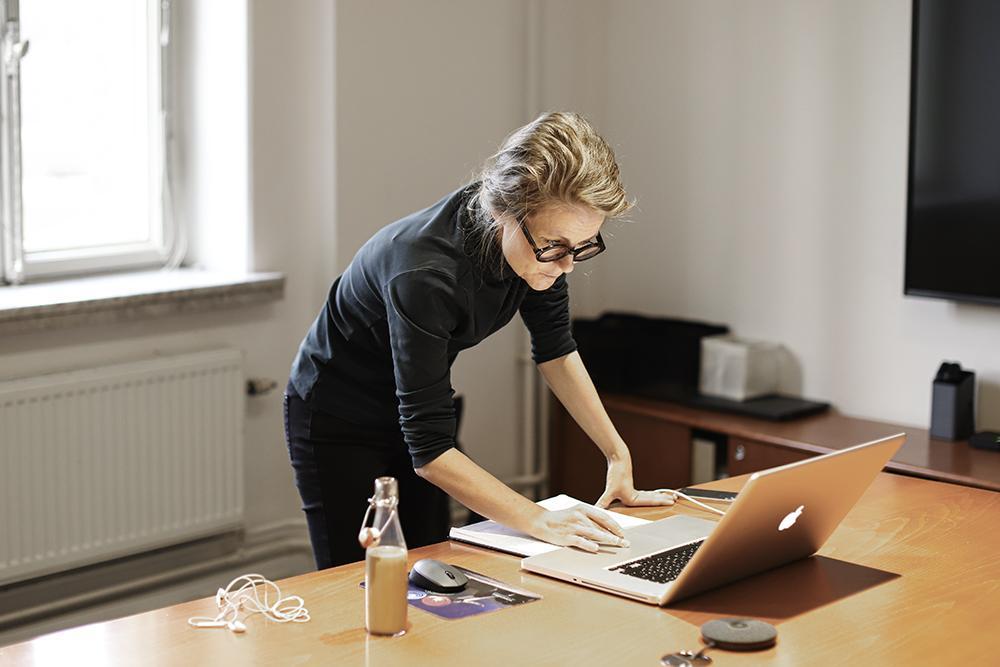Industrial Designer Linda Ukkonen visits Helsinki Upper Secondary School of Visual Arts

Students of Helsinki Upper Secondary School of Visual Arts, also known as Torkkeli, can select architecture and design for their electives. Coordinated by Ornamo and the Design Museum, the Designakatemia project sent Industrial Designer Linda Ukkonen to visit the school. She cooperated with Vice Principal of Arts Tuttu Sillanpää for an introductory course on practical design and entrepreneurship in the creative industry. In the 12-lesson concept planned by Ukkonen, the students learned about the profession of an industrial designer and designed user-friendly furniture.
Industrial Designer Linda Ukkonen inspired students of the Helsinki Upper Secondary School of Visual Arts to think about the differences and similarities between art and design. Ukkonen planned a design exercise to help the students understand the design process which, in the Designakatemia, is based on methods used by professionals. The students also learned about setting up a business, preparing a portfolio as well as tips and links for 3D tools available online or provided by the school.
“The students of the school come from all over Finland, and some already live on their own. Therefore, it seemed fitting to explore and develop furniture for the lifestyle of a modern nomad, in other words a moving worker, in the design exercise. Thinking about mobility and movability was altogether a good match for young people searching for their place in the world. It was inspiring to exchange ideas and hear the students’ unabashed and, sometimes, quite critical opinions of our life surrounded by objects. The students were particularly vocal about brands; how our lives are influenced by them and, on the other hand, how companies must adapt to the opinions of consumers,” says Ukkonen.
Linda Ukkonen helped the students understand industrial design from a usability perspective. The course covered various manufacturing techniques and methods, materials, recyclability as well as different research methods used by designers at the beginning of the design process. In fact, the major difference between design and art is that products are designed from a functional and commercial standpoint by improving existing ideas and creating new solutions. Art, on the other hand, has more intrinsic value and acts as a more direct tool for self-expression. In design, artistry is reflected in the appearance of the products as aesthetics or as innovative, creative solutions.
“Design is very much brainwork, even though the end result is a tangible product. My goal was to inspire the students to find the questions you usually face when designing a product. In development work, it is important to know how to give and receive criticism. I think this was a very functional method as it made the students think and created a more reciprocal, almost dialogue-like teaching moment. The students seemed like inspired, speculative kind of people. They pointed out many excellent notions that I wouldn’t have thought about. They also came up with new types of viable product ideas, such as a fun armchair with a built-in footstool for a pet.”
In the Designakatemia a project coordinated by Ornamo and the Design Museum, professionals from the design industry visit Helsinki schools. The activities are supported by the Culture Unit of Helsinki. Linda Ukkonen works as a Freelance Industrial Designer in Helsinki.
Text: Petra Ilonen



